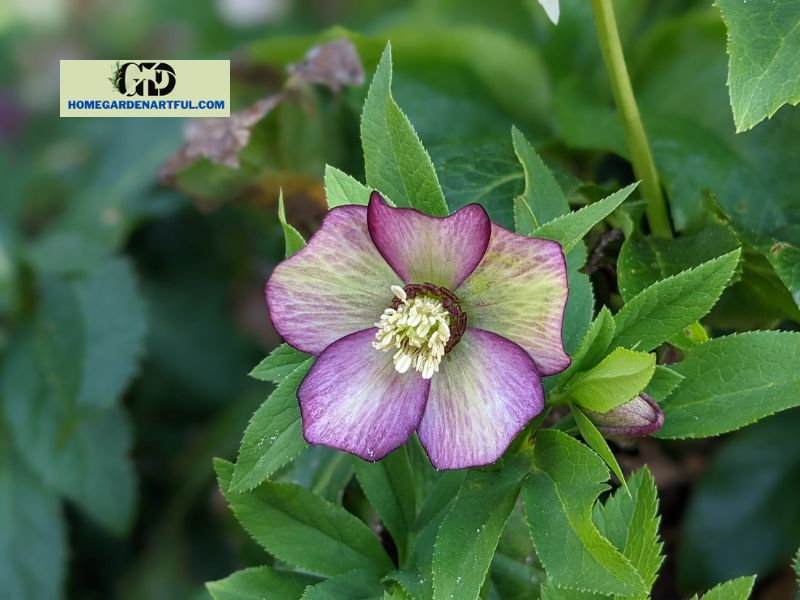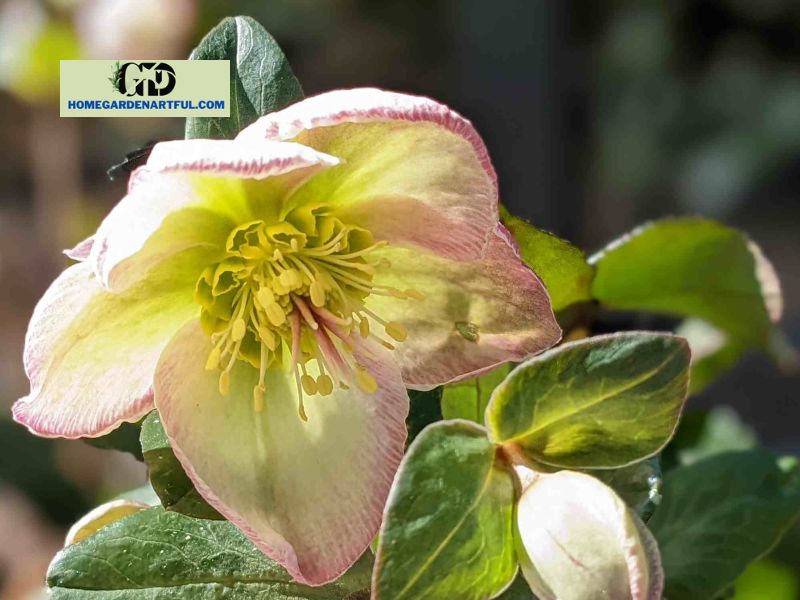Are you curious about Hellebores In Summer? Hellebores, referred to as Lenten or Christmas Roses, are popular among gardeners due to their capacity to bloom throughout the coldest months of the year. Despite their delicate look, these hardy perennials are surprisingly tough and can flourish with little maintenance.
Hellebores require little care over the summer because they go dormant. However, a little summer care can ensure that these lovely plants continue to bloom in your garden year after year. Discover at homegardenartful.com!
Hellebores In Summer: How Does This Plant Look Like?

Hellebores have evergreen leaves that stay on the plant all year. The foliage creates a beautiful, green ground cover during the summer. This area of my garden receives more sunlight in the afternoon, yet the flowers have faded on their own.
This clump is in a shadier location and tends to fade into the background by mid-spring when hydrangeas and hostas take over. Even in June, you can see that the blossoms are still present and have some color!
Summer watering of hellebores
Hellebores are drought-tolerant once planted and can tolerate periods of drought. During long dry spells in the summer, though, your hellebores will enjoy good watering.
Remember that overwatering might cause root rot. Drip irrigation can assist in giving the necessary moisture while preventing the soil from becoming waterlogged. The 14″ drip line with an emitter can be seen running near this hellebore, but not exactly under the plant.
Mulching
Applying an organic mulch layer around your hellebores serves multiple objectives.
It aids in the conservation of moisture in the soil, minimizing the need to water regularly. It also helps to keep the roots cool, which is especially vital during the hot summer months.
Perhaps more crucially, a healthy layer of mulch can prevent the growth of weeds, which would otherwise fight for resources with your hellebores. Some of the plants in the above shot appear to be weeds, but they are actually dianthus and yarrow that I planted from seed this winter!
Fertilizing

Hellebores are not heavy feeders, but a spring application of a balanced slow-release fertilizer can make your hellebores look their best. In the early spring, I apply Plant-Tone to all of the plants.
However, don’t fertilize in the summer because the plant is dormant as well as won’t absorb any nutrients.
Deadheading
Deadheading (removing spent flowers) will keep your hellebores from self-seeding. The seedlings that emerge the next year will not be true to the parent plant and may look entirely distinct!
I normally just let the blossoms die back naturally but have never gotten seeds from them. If I see a particularly sad-looking hellebore, like this one, I’ll clip the blossoms all the way back to the root to clean it up.
Pruning Hellebores In late January, I normally take off the old, ragged leaves from the previous year to make the blossoms more noticeable. However, if you notice any problems during the summer, like black spots, you should remove the damaged leaves right away.
Hellebores can be divided or transplanted

Hellebores dislike being divided or transplanted, and doing so in the summer is not a good idea. They are sluggish to develop, so if you truly want to dig them up, do it in early fall, when they begin to emerge from dormancy.
Early fall division or transplanting allows the plant to grow roots in still-warm soil before the winter. The divided plants may not bloom as profusely next spring, but they will recover by the following year.
If you’re dividing in the spring, do it as soon as new growth begins but after the plant has expended a lot of energy on flowering. Keep in mind that the plant’s energy stores are at their lowest in the spring, which may slow the healing process.
Control of pests and diseases
Despite their hardiness, hellebores are susceptible to typical garden pests such as aphids and diseases like as black spots. Inspect your plants on a regular basis for signs of infestation or diseases. Treat your plants as soon as you see a problem using the appropriate pest control as well as a disease treatment strategy.
Conclusion
While hellebores are low-maintenance plants, a little more attention in the summer may go a long way. By following the guidelines outlined above, you can make sure that your hellebores not only survive but flourish during the summer months, ready to blossom when winter arrives.


